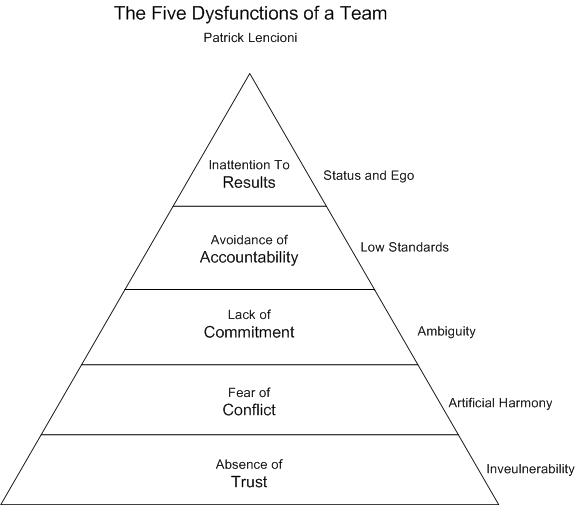We all experience breakdowns in our lives and at work. Patrick Lencioni, in The Five Dysfunctions of a Teams covered some of the more common ones.
In organizations in which any of these exits, their presence is hardly a secret, but there are at least two questions that are are seldom asked, and which might contribute to a systematic approach to their resolution.
1. Who is the customer who is not being served?
Too often, if a team is not functioning well, its members think it’s the leader’s responsibility and the leader thinks it’s the member’s. The truth is that it’s both.
These dysfunctions exist where the leader is not having the appropriate conversations required to produce a change in behavior, and the members are not committed to producing satisfaction for the customer. In some cases, the members don’t even see their leader as a customer at all.
Ultimately, the success of every organization, department, or team is a direct byproduct of the quality of conversations that are taking place or missing within it.
My promise is to:
- Help leaders identify the missing conversations for higher performance.
- Coach leaders in more effective ways to produce the required commitment for results that take care of what is important to them and their organization.
- Develop the skills for recognizing the cost of not declaring breakdowns, how to declare them effectively, and in a way that produces greater commitment to results and satisfaction.
2. Who is the performer and what are their commitments?
In the context of leaders and teams, the leader is a customer and the team is a performer. This goes well beyond the notion of an “individual contributor” or “line” worker, and instead focuses on the relationship between those who make requests (customers) and those who satisfy them (performers). A common breakdown here is the failure to connect what the performers are doing back to the underlying purpose for which the request was actually made. Yes, people have jobs, and those jobs have basic responsibilities, but too often the details of that work is disconnected from the underlying purpose of the work.
My promise is to:
- Work with team members to help shift the dynamics of their environment towards greater effectiveness. This can be done regardless of one’s role in the organization.
- Help develop key skills related to how one makes and responds to requests.
- Shift actions towards producing greater value by making “conditions of satisfaction” part of the conversation about purpose and accountability.

